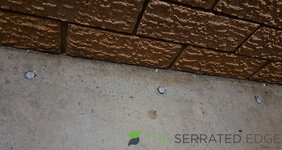Yeah Goonie, water is critical as the use it to create a unique humid climate.
They love under slabs so I hope the builder had good barriers in place around the slab.
Elevated is easy to check as they absolutely need the mud tunnel to stop light and create their preferred climate. They don’t wander around in light or outside their preferred and created environment (like how you all strive to create on in a tent). Look for mud tubes going up your footings.
Tap you walls like a termite inspector for dummy hollow sounds (light hammer etc). Often a timber wall looks perfect but is really just a thin layer like paper after being eaten.
They love pine, Oregon, dress Timbers (jambs, windows, door frames, dress pieces like between wall and floor).
They’ll come through the slab in expansion joints.
You can make detection places using cardboard based traps so research organic termite control.
I’ve chased them for 3 years in my sisters federation house in Sydney. Found the nest eventually in the compost heap. They’d go full suicide mission eating and dying in masses to get through waterproof flooring (was toxic to them) in a bathroom to consume the Oregon wall studs.
They are controlled in my place but I still find them within 10m of the structure at times, they are an environmental constant up here.
Boxes of newspapers are a good example of a trap, well more like a detection point.
They love under slabs so I hope the builder had good barriers in place around the slab.
Elevated is easy to check as they absolutely need the mud tunnel to stop light and create their preferred climate. They don’t wander around in light or outside their preferred and created environment (like how you all strive to create on in a tent). Look for mud tubes going up your footings.
Tap you walls like a termite inspector for dummy hollow sounds (light hammer etc). Often a timber wall looks perfect but is really just a thin layer like paper after being eaten.
They love pine, Oregon, dress Timbers (jambs, windows, door frames, dress pieces like between wall and floor).
They’ll come through the slab in expansion joints.
You can make detection places using cardboard based traps so research organic termite control.
I’ve chased them for 3 years in my sisters federation house in Sydney. Found the nest eventually in the compost heap. They’d go full suicide mission eating and dying in masses to get through waterproof flooring (was toxic to them) in a bathroom to consume the Oregon wall studs.
They are controlled in my place but I still find them within 10m of the structure at times, they are an environmental constant up here.
Boxes of newspapers are a good example of a trap, well more like a detection point.







